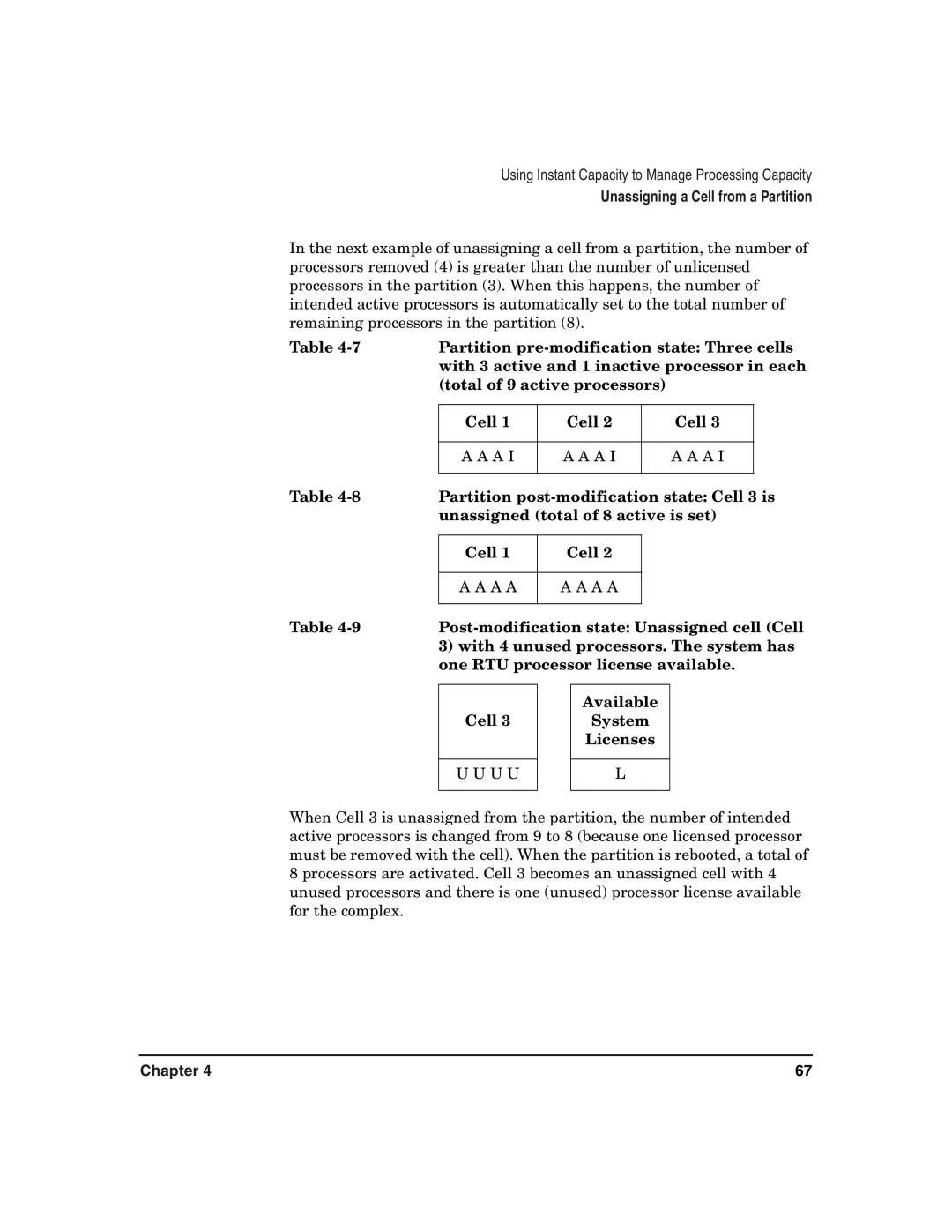
Using Instant Capacity to Manage Processing Capacity
Unassigning a Cell from a Partition
In the next example of unassigning a cell from a partition, the number of processors removed (4) is greater than the number of unlicensed processors in the partition (3). When this happens, the number of intended active processors is automatically set to the total number of remaining processors in the partition (8).
Table | Partition | ||||
| with 3 active and 1 inactive processor in each | ||||
| (total of 9 active processors) |
|
| ||
|
|
|
|
|
|
| Cell 1 | Cell 2 |
| Cell 3 |
|
|
|
|
|
|
|
| A A A I | A A A I |
| A A A I |
|
|
|
|
|
| |
Table | Partition | ||||
| unassigned (total of 8 active is set) | ||||
Cell 1
Cell 2
A A A A
A A A A
Table |
|
| 3) with 4 unused processors. The system has |
| one RTU processor license available. |
Cell 3
Available
System
Licenses
U U U U
L
When Cell 3 is unassigned from the partition, the number of intended active processors is changed from 9 to 8 (because one licensed processor must be removed with the cell). When the partition is rebooted, a total of 8 processors are activated. Cell 3 becomes an unassigned cell with 4 unused processors and there is one (unused) processor license available for the complex.
Chapter 4 | 67 |
